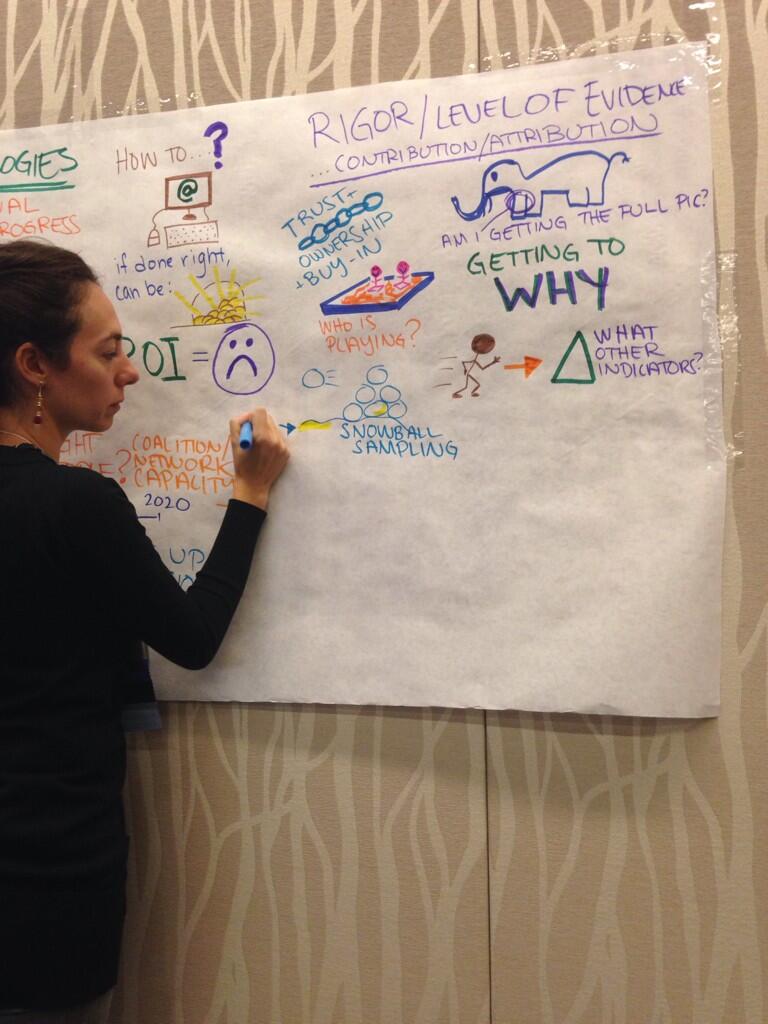Hi, this is Kat Athanasiades from Innovation Network. Our team is especially engaged in improving how evaluation information is communicated, and to that end we thought we would do some graphic recording at Evaluation 13!
That’s me, working on the graphic recording of an Evaluation 13 session about advocacy evaluation.
What is graphic recording? Graphic recording is organizing information in a visual way using words, symbols, and pictures. This is often done in real time, paced with the information generated in a panel session, a meeting, a focus group, etc.
Hot Tip: Graphic recording benefits a number of different audiences:
- Speakers. It isn’t always easy to remember the themes of a talk. A visual map of key points can help speakers recall ground covered and build on themes from earlier in a presentation.
- Attendees. A graphic recording of a session can help attendees better follow the conversation and understand key take-aways. In our session, one concept was discussed pessimistically by panelists—and the graphic recording helped elicit discussion from attendees around the “frownie face” that had represented that concept. The session became more participatory as attendee views were incorporated into the visualization.
- Absentees. You can’t make it to every talk or meeting you would like to attend, particularly at Evaluation 13! A graphic recording can help you quickly understand the conversation arc and key points.
What did the finished product look like? Here are a few shots of the completed graphic recording for session 706: Seeing the Forest Beyond the Trees: Learning Across the Experiences of Seven Advocacy Evaluators.
Rad Resource: Looking for inspiration? Check out the RSA Animate videos, which are high-quality visualizations of visionary talks put on by the RSA.
Hot Tip: You don’t need an art background to practice visual recording. I have some basic knowledge of composition and shapes from a couple of drawing and photography courses I took in college—quite some time ago. Really, I just started drawing in a staff meeting one day, and thus a graphic recorder was born. Graphic recorders often work off of templates to give a shape to a visualization, and the point is to populate a graphic recording with easy-to-recognize images. They do not have to be works of fine art.
Rad Resource: Wondering how to get started? You can browse Dan Roam’s Napkin Academy, or practice by incorporating graphic recording methods into your own note taking.
Do you have questions, concerns, kudos, or content to extend this aea365 contribution? Please add them in the comments section for this post on the aea365 webpage so that we may enrich our community of practice. Would you like to submit an aea365 Tip? Please send a note of interest to aea365@eval.org . aea365 is sponsored by the American Evaluation Association and provides a Tip-a-Day by and for evaluators.


